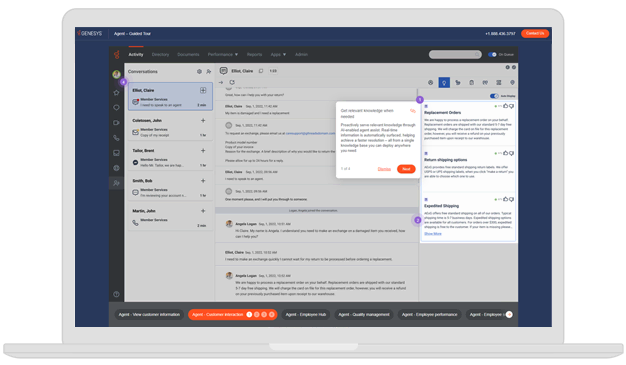Businesses must adapt to a new environment. Customer and employee needs are changing — and they’ll continue to change. The COVID-19 pandemic is the instigator; it overturned the status quo and caused people to rethink what’s important to them.
In this environment, CX leaders are rethinking measurement strategies to identify, amplify and win on the experience aspects customers and employees really care about. These leaders are focusing less on efficiency measures and more on experience metrics: understanding people’s values, preferences, expertise, expectations, perceptions and attitudes — the leading indicators of their behaviors.
From lagging to leading indicators
CX leaders who focus on experience metrics can reposition their value to an organization in a profound way. Historically, they’ve helped find broken experiences and fix them. Today, forward-thinking CX leaders are saying, “We can help the organization stay attuned and adapt in this changing environment.”
Current CX measurements assume stability and a framework of behaviors. But we need to suppose some degree of instability. Customer expectations are changing, so how do we identify where their needs aren’t being met and find ways to meet them? Most metrics track what’s trending; we have to use technology to shift toward sensing underlying frustrations — whether from customers or employees.
This shift to sensing requires three adjustments:
- Focusing resources on more frequent listening (e.g., using data and artificial intelligence to understand sentiment on an ongoing basis)
- Rethinking customer and employee segmentation models. Segments change and we need an ongoing understanding of them to provide the organization with continuous, actionable information
- Understanding experiences from end to end to identify the true drivers of customer value — these might not be the moments you expect to matter the most
Most metrics track what’s trending; we have to use technology to shift toward sensing underlying frustrations — whether from customers or employees.
What’s at stake? Many customers are going to stop doing business with companies that don’t meet their needs and start doing more business with those that do.
Listen up or lose out
The same renewed focus on experience is needed to rethink your relationships with employees. An estimated 72 million US employees will look for a new job over the coming year. People have called it “The Great Resignation.” But on the flip side is what I’ve called “The Great Onboarding”; they’re leaving one company, but they’re joining another.
If customers and employees are saying, “You need to listen to us or we’re going to leave,” business leaders must start genuinely caring about their thoughts and feelings. It’s time to focus on experiences that will develop lasting loyalty and the metrics that underly them. And it’s an ideal time for CX leaders to assert what they bring to an organization — and the fundamental importance of experience not only surviving, but also thriving in times of change.







